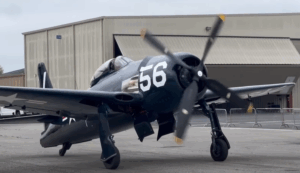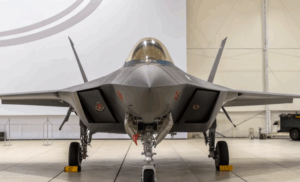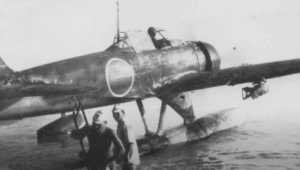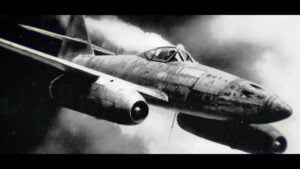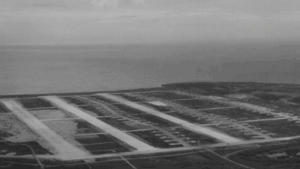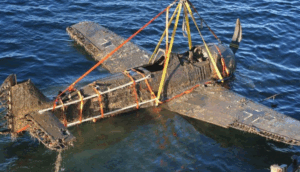The Smallest Aircraft Carrier of WWII Used To Launch Scout Planes from Deck

jmantime / YouTube
In the history of World War II, the concept of aircraft carriers typically brings to mind massive warships capable of hosting fleets of aircraft. However, one of the most unusual and smallest experimental vessels used during this time came from Germany’s Luftwaffe rather than its navy. The Grille, designed initially as a seaplane recovery and launch vessel, holds the distinction of being one of the smallest aircraft carrier-like ships in history.
The Grille was developed in the mid-1930s, a period when Germany was closely watching advancements in British and American aircraft carriers. While Britain had been building carriers since the end of World War I, Germany was in the early stages of experimentation. To explore the idea of aircraft carriers, the Luftwaffe began modifying existing vessels. In 1936, construction of the Grille began at the Oderwerke shipyard in Stettin, a German city at the time (now Szczecin, Poland).

From Seaplane Support to Experimental Aircraft Carrier
At just 890 tons, the Grille was incredibly small compared to most aircraft carriers of the era. She was equipped with a crew of 56 men and seven officers and armed with three 20mm Flak anti-aircraft guns. Her speed was modest, reaching up to 18.7 knots. Initially, the Grille was designed as a seaplane recovery and salvage vessel, known as a Flugzeugträger-Schiff in German. This type of ship was intended to help launch and retrieve seaplanes, which played a crucial role in reconnaissance and patrol missions before the war.
In 1937, however, the Luftwaffe converted the Grille into an experimental light aircraft carrier. The ship’s midsection and stern were modified to include a small flight deck capable of accommodating two light planes. The aircraft most commonly associated with her operations was the Fieseler Fi 156 Storch, a short-takeoff-and-landing reconnaissance plane. These planes could take off and land on the flight deck, providing valuable testing data for Germany’s plans to develop larger aircraft carriers.

A Test Platform Amidst Giants
Despite these modifications, the Grille was never intended for offensive operations. Instead, she served as a test platform to explore the feasibility of carrier-based aircraft. Compared to other aircraft carriers in service at the time, her diminutive size stood out. Escort carriers used by the United States and Britain, for instance, often displaced between 8,000 and 10,000 tons and were converted from larger ships like cargo vessels or oil tankers. By contrast, the Grille was a fraction of that size, weighing less than 1,000 tons.
Her small size becomes even more striking when compared to fleet carriers of the era. For example, Germany’s only large carrier project, the Graf Zeppelin, would have displaced over 30,000 tons if completed, while the American USS Lexington weighed more than 38,000 tons at the start of the war. The Grille, by comparison, was more akin to a floating laboratory than a warship.

From Experimental Vessel to Historical Footnote
The Grille’s role as an experimental vessel lasted until 1943, when priorities shifted due to the changing demands of the war. She was reconfigured back into her original role as a seaplane recovery vessel and continued to serve the Luftwaffe in this capacity until the end of the war. After Germany’s defeat in 1945, the Grille was handed over to the French Navy, where she was renamed the Marcel Legrand. In French service, she operated as a reconnaissance vessel for several decades before being scuttled off the African coast in 1990.
While the Grille was never officially classified as an aircraft carrier in the traditional sense, her unique design and experimental role make her a fascinating footnote in naval history. As one of the smallest ships to test the concept of carrier-based aviation, she provided valuable insights that contributed to Germany’s early carrier experiments, including the ill-fated Graf Zeppelin project and later conversions like the Weser.














